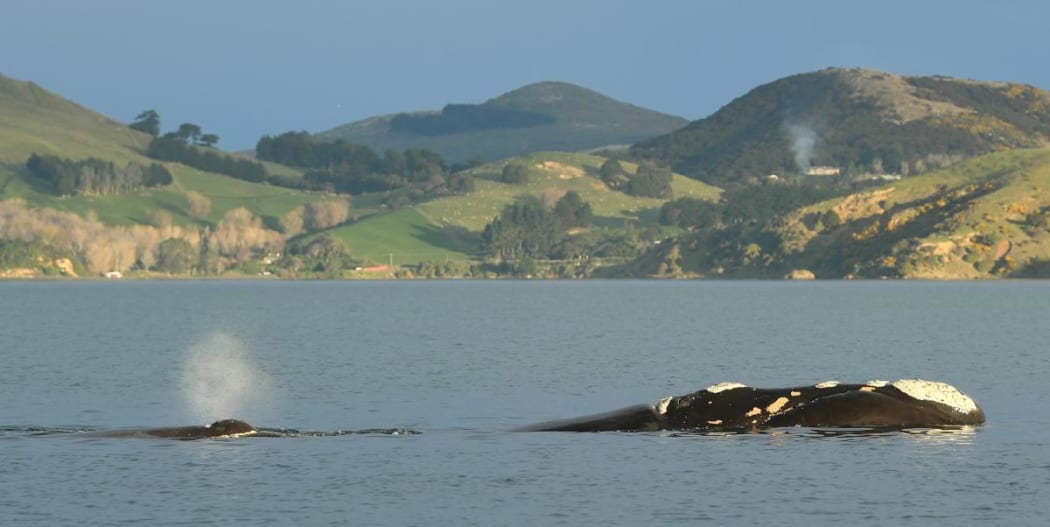By Tim Miller for the Otago Daily Times
Almost 100 years after they were hunted to the brink of extinction, two southern right whales in Otago Harbour at the weekend delighted hundreds of sightseers along the shoreline.

A southern right whale calf spouts while following its mother in Otago Harbour on Saturday. Photo: Otago Daily Times / Stephen Jaquiery
The mother and calf were spotted swimming near the Aramoana mole and off Deborah Bay on both Saturday and yesterday, and there were reports of another whale near Harington Point.
Empty sections of road and verges between Careys Bay and Pulling Point became viewing spots for those fascinated by the large marine mammals.
People in boats or yachts were treated to a close encounter with the giant mammals as they swam about 300m from shore.
Department of Conservation biodiversity manager Jim Fyfe said the visit was rare for modern times and pretty special.
"It's that time of year that we expect mothers to be coming in the sheltered waters and having calves, and Otago Harbour was one of those harbours the whales used to come to before they were hunted."
Based on the size of the calf, Mr Fyfe said it could possibly have been born this season.
It was difficult to guess how long the pair might stay in the harbour, but in larger groups southern rights were known to spend months in the same place after calving.
In the past few years there had been more southern right whales spotted near the Otago coast and Mr Fyfe said one fisherman told him he had seen more in the last five years than in the previous 25.
As individual southern right whales could be identified by callosities - large, white, rough growths on their heads - DOC would be interested to see any photos taken by members of the public, he said.
The Bonner family - Delia, Guy, Olivia, 12, Lexi, 9, and Dylan, 5 - had planned to travel out to the harbour heads on Saturday in the hope of spotting whales and dolphins but they did not have to go that far before they saw the mother and her calf.
"We just parked up and they swam right between us and another boat about five metres [away]. It was just amazing," Mrs Bonner said.
Mr Fyfe said anyone who planned to use a boat to view the animals should stay at least 300m away and, as with all wild animals, treat them with respect.
The rules
Department of Conservation rules around marine mammals:
- Travel no faster than idle or "no wake" speed within 300m of any marine mammal.
- Approach whales and dolphins from behind and to the side.
- Do not circle them, obstruct their path or cut through any group.
- Keep at least 50m from whales or 200m from mothers and calves.
- No swimming with whales.
- Idle slowly away. Speed may be gradually increased to outdistance dolphins and should not exceed 10 knots within 300m of any dolphin
This article was originally published in the Otago Daily Times

